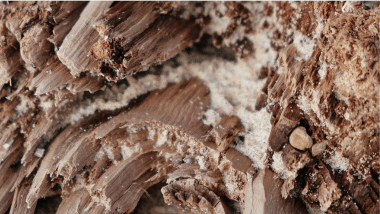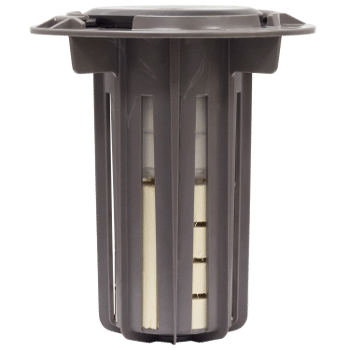Termite Prevention Clearwater
Ten Suggestions You Can Do To Secure Your Home From Termites
The more you delay, the worse your unwanted termite invasion will get worse.
Whenever you suspect that you’ve an unwanted termite concern, do not wait.
In Need Of A Price Quote?
No time to speak with us now? No worries. Fill out the form below and one of our pest exterminator specialists will call you.
Now the winter season is almost over and for the majority of people the warmer weather, longer daylight hours and the first flowers of spring can’t come quickly enough. But, as the weather becomes warmer, you can also begin to see a not so pleasant sign that spring has sprung, the invasion of flying termites, or swarmers.
Is Termite Prevention Worth It?
Termites are a major problem they can literally damage your house without you even knowing it is happening until a lot of damage has been done. They cause over $5,000,000,000 in damages annually to USA properties, but usually your home owners insurance won’t cover any of it. They will chew through the wood beams, flooring & wallpaper of your house undetected, 24/7, and will totally jeopardize the whole structural stability of your house within a number of years depending on the type that has invaded your house.
Termite Prevention DIY Suggestions
There are numerous steps that property owners can do that will help avoid getting a termites infestation in your home. Here are 7 of the best termite prevention treatment suggestions that you can use to safeguard your house from a termites swarm:
Table of Contents
- Remove or decrease wetness in and around your house
- Change any loose mortar and the weather stripping
- Divert water away from your home
- Routinely examine the foundation of your house for indications of mud tubes
- Preserve a minimum 18-inch gap in between soil and any wood structures of your house
- Consider arranging an expert termite inspection annually
- Store firewood at least 20 feet away from your home
- Use a termite prevention spray
- Use a Non Repellent Insecticide Termidor SC and Taurus SC
- Use termite baits and monitors

Whenever you’ve a termite concern, our termite control professionals are able to deliver a solution to your issue.
1. Remove or decrease wetness in and around your house
Termites require wetness to flourish. Repair any dripping water pipes, faucets and outside AC units
2. Change any loose mortar and the weather stripping
If it is required then replace any loose mortar around basement foundation and windows and the weather stripping.
3. Divert water away from your home
Ensure that water is diverted away from your home via properly operating rain gutters, splash blocks and downspouts.
4. Routinely examine the foundation of your house for indications of mud tubes
Get into the habit of routinely inspecting the foundations of your house for any indications of mud tubes or irregular or bubbling paint and wood that sounds hollow when your tap it|tap on it}. Termites use the mud tubes as protected highways to reach their food source.
5. Preserve a minimum 18-inch gap in between soil and any wood structures of your house
Ensure that you always have a minimum of an 18-inch gap in between & the soil}.
6. Consider arranging an expert termite inspection annually
Termites damage isn’t covered by the majority of property owners’ insurance coverage so the quicker you find out if you have an infestation the better and cheaper it will be to put right
7. Store firewood at least 20 feet away from your home
Any firewood or any other timber stockpiles should be kept at least 20 feet away from your home.
8. Use a termite prevention spray
Some people ask “Can you spray to prevent termites?” You can use liquid termite insecticides (termiticides) for soil and barrier treatment.
These spray termite treatments stop termites that are already inside your structure from getting to the soil to get the wetness that they require to survive. If you select a liquid termite spray technique, it will offer you faster results, and you are able to use it near to the termite invasion.
9. Use a Non Repellent Insecticide like Taurus SC
The innovation of non repellent insecticides such as Taurus SC, is an improvement over other termite insecticides that only provide repellent barriers, which the termites can just discover ways around them.
The use of a repellent termite chemical is a significant short-coming in the standard chemicals used for termite control. Taurus SC is made up of non-repellent insecticides suggesting they are undetectable by the termites. The termites can’t taste, see, smell or prevent Taurus SC.
The chemical barrier pesticides that are presently available are created to last no greater than 5-10 years.
10. Use termite baits and monitors

The innovation of baiting systems for termites are continuously altering and enhancing. We presently recommend the Advance Termite Bait Monitoring Stations. Baiting nests of termites is easy and can also be used as a tracking tool to detect termites when they are not yet a risk to your house.
Termite baits eliminate and control in conditions where the structure is untreatable with soil termiticides (near a body of water for instance), or there is an issue about pesticide use, and even in structures where soil treatments have failed.
Termite Prevention Services
It is very difficult to manage a termite infestation with do-it-yourself measures. If you suspect you have a termite invasion, contact our licensed termite exterminators who offer termite prevention services right away. They will figure out the degree of your termite problem and give you a recommendation for a suitable course of treatment.
Whenever you’ve a termite concern, our termite control professionals are able to deliver a solution to your issue.
Termite Prevention FAQ's
One popular termite-removal method involves treating the soil around your house with a termite insecticide such as imidacloprid or fipronil. Wood can also be treated directly if termites are inside.
How Do I Keep Termites from Coming Back? Eliminate sources of standing water in or near the home as well as any moisture problems such as a leaky faucet or broken water pipe.Ensure your yard has good drainage avoid excess mulch and clean out gutters regularly.Be cautious of areas in the home where wood is in contact with soil.
Common Types of Termites Termites are present in 70 percent of countries across the world and their population outnumbers human beings on a ratio of ten to one. The most common termite species found in the United States are subterranean termites Formosan termites dampwood termites drywood termites.
It takes two to four years for the colony to mature and then the cycle starts again with a new set of alates swarming to form new colonies. In addition to laying eggs the king and queen produce pheromones that help regulate life in the colony.
Usually in the spring summer and periods of humidity. You may have witnessed swarms of winged termites especially when the ambient air temperatures start to rise. This change in temperature triggers the winged termites to emerge from their nest (within some form of timber) to embark on a nuptial flight.
While it’s true that termites remain active during winter that doesn’t mean they can survive the cold. As cold-blooded insects termites depend on their environment to provide them with the heat they need to survive. When temperatures drop below freezing termites will die out unless they find cover.
Termites work 24 hours a day. Worker termites bring food to the colony through tunnels without ever resting. Termites need moisture to survive and will die if exposed to sunlight or open air for more than a few minutes. Their tunnels protect them from the elements.
While the bite of a soldier termite is mostly harmless and termites are not known to spread diseases or inject venom they are not entirely harmless. They can impact your health in an indirect way. Subterranean termites cause damage that can promote mold issues in your home.